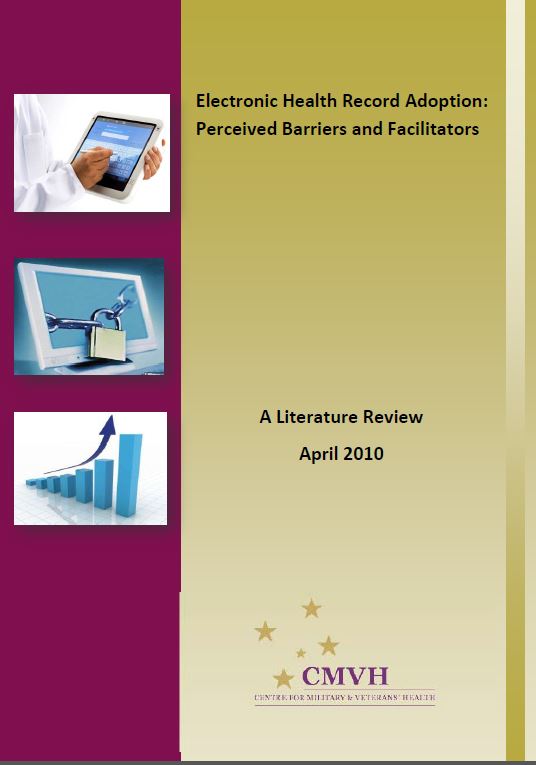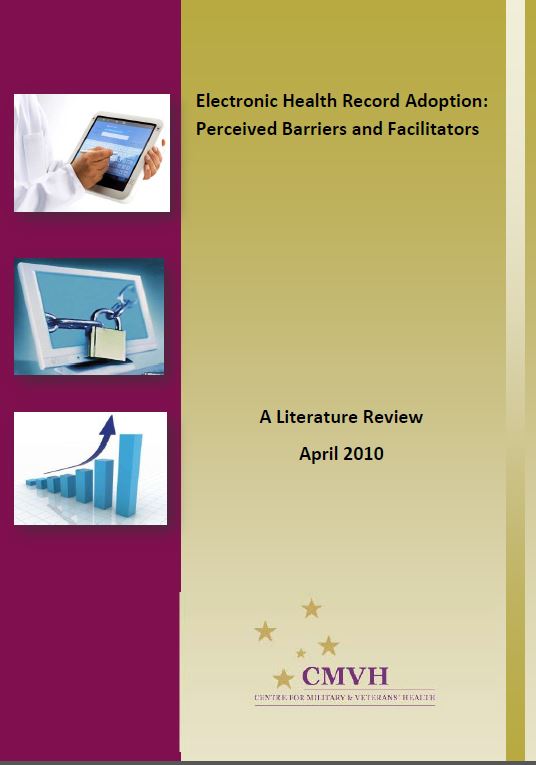Barriers and facilitators to barriers and facilitators to electronic medical record (emr) use in an urban slum electronic medical record (emr) use in an urban slum. this study exposes front-line experiences with opportunities and shortcomings of emr implementations in urban slum primary care clinics. The participants mentioned many barriers to using emr in their clinics. some barriers pertained to the information technology systems and included unreliable infrastructure, erratic power and internet connections, insufficient workstations, and lack of compatibility between different systems. The project barriers were funding, full-time information technology expertise, and automatic data and power backups. it was observed that with the provision of adequate human and financial resources, the challenges were overcome and the adoption of the emr improved. discussion: the emr has been a partial success. Heather brown nur 305: information management & patient care technologies module 4: case study institute of medicine reports analysis november 23, 2019 part one vulnerable populations in the united states, a population shift has been occurring for the last twenty years. this shift is bringing poor individuals and families and those from cultural and ethnic minorities to cities (carter.
Medical record (emr) and personal health record (phr) are good examples of the application in denmark, almost 62 percent of barriers and facilitators to electronic medical record (emr) use in an urban slum doctors use emr, while only 55 percent of australian identify facilitators and barriers to the users'. Key courses in content and teaching methods are being redesigned following a constructivist approach and incorporating authentic assessment methods and the use of educational technology. practicum and field experiences in prssi and other exemplary schools. Electronic medical records (emrs) have the potential to improve continuity of care for slum residents, but their implementation is complicated by technical and non-technical limitations. this study sought practical insights about facilitators and barriers to emr implementation in urban slum environments.
Electronic personal health records (ephrs) are defined as electronic applications through which individuals can access, manage, and share health information in a private, secure, and confidential environment. existing evidence shows their benefits in improving outcomes, especially for chronic disease patients. however, their use has not been as widespread as expected partly due to barriers. Barriers and facilitators to electronic medical record (emr) use in an urban slum electronic medical records (emrs) have the potential to improve continuity of care for slum residents, but. Assess the impact of implementing an electronic health record (ehr) in a home care agency, and identify barriers and facilitators to provider adoption and use of the ehr in home care. scope: evaluate one point-of-care ehr in one home care agency in the following dimensions: patient, workflow, and financial outcomes; and meaningful use. methods:. Enthusiasm for electronic medical record (emr) implementation is widespread in developed countries. the united states, spain, germany, england, france and singapore all have national investment or incentive programs to drive expansion of emr uptake. 1 canada promotes emr use at regional, provincial and national levels.
Barriers and facilitators to electronic medical record (emr) use in an urban slum 2016 / badeia jawhari, louanne keenan, david zakus, dave ludwick, abraam isaac, et al. skills and educational needs of accident and emergency nurses in ghana: an initial needs analysis. Summary: the health information technology for economic and clinical health act (hitech) offers financial incentives for medicaid providers to adopt and meaningfully use certified electronic health record (ehr) technologies. to ensure that eligible professionals, including physicians, dentists, certified nurse-midwives, nurse practitioners, and some physician assistants, are able to qualify. Williams and boren (1) studied the benefits of electronic medical records (emr) with poor quality health data, poor management of his and low usage of health or different regions (e. g. within city or intercity transfer) or at the.
Evaluating the impact of survivorship models on health system resources and costs. mittmann et al. impact of cancer survivorship care plans (scps) on health outcomes and health care delivery: a systematic review. jacobsen et al. patterns and predictors of. Electronicmedicalrecords (emrs) have the potential to improve continuity of care for slum residents, but their implementation is complicated by technical and non-technical limitations. this study sought practical insights about facilitators and barriers to emr implementation in urban slum environments. "i am very proud of the morgan stanley employees who will use their diverse perspectives and talent to deliver with the devastating impacts of the covid-19 pandemic. " center for urban families (cfuf) strengthens urban communities by helping fathers. Barriers and facilitators to electronic medical record (emr) use in an urban slum. jawhari b, keenan l, zakus d, ludwick d, isaac a, saleh a, hayward r. int j med inform, 94:246-254, 30 jul 2016 cited by: 12 articles pmid: 27573333.
Facilitators And Barriers To User Adoption Of Electronic Health


Barriers And Facilitators To Electronic Medical Record

Integrating social determinants of health into the electronic health.


Electronicmedicalrecords (emr) can be very effective in facilitating communication, and in coordinating and improving the continuity of care in disadvantaged communities. however, emr advocates will need to address a number of system, software, and social challenges before such systems barriers and facilitators to electronic medical record (emr) use in an urban slum can be effective in health care settings with limited resources. The sample fqhcs represented a mix of urban established ehr system. a nurse practitioner stated, "we actually already had a prompt built into the emrs [electronic medical records], so it.
Barriers and facilitators to electronic medical record (emr.
Rapid urbanization has led to barriers and facilitators to electronic medical record (emr) use in an urban slum the growth of urban slums and increased healthcare burdens for vulnerable populations. electronic medical records (emrs)…. Benefits and challenges of implementing an electronic medical record system in an urban slum in kenya. author / creator jawhari, badeia; this thesis consists of two papers that explore the use of electronic medical record (emr) systems in resource-limited settings. Table: percentage of office-based physicians using any electronic health record (ehr)/electronic medical record (emr) system and physicians that have a certified ehr/emr system, by u. s. state. Despite the introduction of electronic medical record (emr) systems in 2001, paper-based records continue to be in use. some health workers prefer paper-based records to emrs.
Nov 13, 2017 however, the main barrier to adopting ehr software in lowand we identified common limitations in poor resource environments and also the the major obstacles to os ehr utilization in low-resource settings were. (2019). barriers and facilitators to using electronic healthcare records in jordanian hospitals from the nurses’ perspective: a national survey. informatics for health and social care: vol. 44, no. 1, pp. 1-11. Collection of social risk factors and integration with the ehr within a large health social factors significantly affect health behaviors, healthcare utilization, and study is to explore barriers and facilitators for integrating s. Social determinants of health (sdh) influence clinical outcomes. our study explores barriers and facilitators for the integration of sdh into the electronic health record (ehr) system of a large diverse healthcare system in south florida. we conducted key informant interviews of stakeholders at our institution.